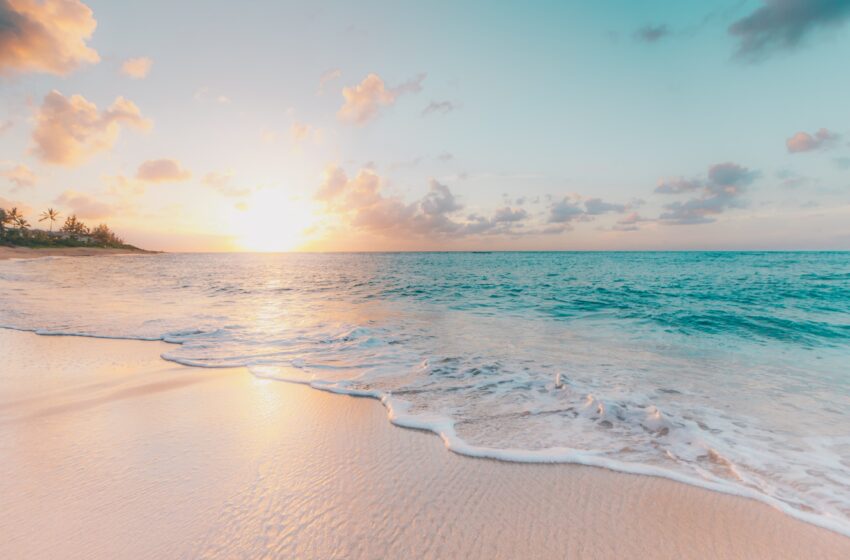
Cayman Islands’ Only Travel Guide You Need For A Great Trip in 11 Easy Steps
- Destinations Americas
Cruisit Team
- July 4, 2022
- 0
- 4760
- 64 minutes read
The Cayman Islands’ Background
Christopher Columbus first observed Cayman Brac and Small Cayman circa 1503 on his fourth journey to the New World, when his ship was forced westward onto “two very little and low islands, full with tortoises, as was all the sea all around.” There were so many tortoises that they looked like little rocks, which is why these islands were dubbed Las Tortugas. The three islands were designated Lagartos on a 1523 map, which meaning alligators or huge lizards. However, by 1530, the word Caymanas had been established, derived from the Carib Indian phrase for marine crocodiles, which had been discovered to inhabit the islands. Sir Francis Drake also saw them and described seeing gigantic serpents known as Caymanas, which are edible.
The abundance of turtles on the islands made them a popular destination for ships traversing the Caribbean in search of meals for their crews. For example, the first two immigrants from Oliver Cromwell’s disbanded army landed in the late 1650s with the goal of hunting turtles. Isaac Bodden, the Cayman Islands’ first recorded permanent inhabitant, was born in 1700 on Grand Cayman. However, this started a trend that gradually reduced the quantity of turtles in local seas, forcing local turtle fishermen to go to Cuba and the Miskito Cays to get their harvest.
In the Treaty of Madrid, the islands were declared a dependency of Jamaica around 1670. Then, the British colonized the Cayman Islands from Jamaica in the 18th and 19th centuries. and were managed by Jamaica from 1863 and remained a British dependency until 1962, when the former obtained independence.
The territory is made up of three major islands. Grand Cayman is the largest and most populous island with the majority of the tourist amenities. Little Cayman and Cayman Brac are the other two islands known as Sister Islands. The smallest and least developed of the islands is Little Cayman, barely 10 miles long and one mile wide, and it is particularly popular with divers, especially for its ship wrecks.
The Cayman Islands have a tropical marine climate. The summer months from May to October are often warm and wet, while the winter months are milder and drier. The islands are comprised of low-lying limestone surrounded by coral reefs, with many divers and snorkelers drawn to these reefs. The Bluff in Cayman Brac is the highest point in the nation, standing at 43 meters.
“The fifth largest banking center in the world is more than it’s tax haven advantages, it also boasts pristine white beaches with crytal waters, culture, a rich history, and the best culinary scene in the Caribbean“
Frequently visited as part of a cruise, but the Cayman Islands also have several regular flights into the nation with millions of tourists flocking into the islands every year, with no indicators in sight that this trend will change. Although the Cayman Islands are not widely recognized for its all-inclusive resorts, accommodation of various types is easily accessible. Many guests prefer to stay in condominiums or luxury hotels with many of them condensed in the Seven Mile Beach area.
The majority of the tourists going to Cayman Islands spend a few hours shopping, sunning, or swimming with stingrays before departing. Others congregate to Seven Mile Beach, where they may relax at an all-inclusive resort on one of the Caribbean’s most gorgeous lengths of beach, with a select handful go even further. If you are a wanderlust spirit considering a vacation to the gorgeous islands, read these Cayman Islands travel tips before you pack your bags. The Cayman Islands are home to a plethora of water sports, lagoons, bays, beaches, and museums. However, there are a few important pointers to remember. These Cayman Islands vacation ideas are advice that will not only prepare you for your trip to the islands, but will also play a significant role in making your Cayman Islands holiday unforgettable!
Once you step foot in Cayman, you will quickly see how multinational it is, with nearly half the population being from elsewhere. Yet, its vibrant indigenous culture lives on, particularly in Bodden Town, East End, and Cayman Brac.
It just takes a tiny spirit of adventure to discover Cayman’s greatest treasures. Discover lush woods, rich birds, fascinating caverns, and beautiful beaches on the North Side and the Sister Islands. Amazing underwater cliffs and accessible shipwrecks may be found under the waters. When you dive right in, you will also notice the friendly locals, along the incredible natural wonders above and below the water.
Other popular activities on the island include swimming with stingrays, diving, snorkeling, trekking, duty-free shopping in the colorful capital of George Town, and retreating to the island’s calm East End. Grand Cayman is also home to the most vibrant Cayman Islands nightlife.
With their white sand beaches, magnificent blue sea, and excellent snorkeling, the Cayman Islands are breathtakingly lovely. The nation is made up of a series of Caribbean islands located 90 miles south of Cuba.
When it comes to food, Cayman outperforms the rest of the Caribbean with its culinary scene, with food as lively and colorful as the island itself. Blending spices, fish, and fresh produce to create distinctive and flavorful meals, Cayman’s food is incentive enough to come. It’s where conch is believed to have originated as a delicacy, and it sure is an enjoyable treat in all its forms.
Before beginning on your exciting journey to the Cayman Islands, take out a notepad and make a rough draft of everything you need to prepare for and do to get there the islands. The islands feature several tourist attractions; nevertheless, preparation is essential if you wish to see the bulk of these attractions. Prepare the necessary paperwork, conduct some research on the location, and pack your baggage accordingly. When you get on the Cayman Islands, you should have prepared where you want to go, what you’re going to do, where you’re going to stay, your daily plan, and a time-bound agenda for touring.
If you assume a Caribbean trip is only for the idle traveler laying on the beach, the Cayman Islands and this guide and itinerary will surprise you. Here’s a holiday for those of you who want to be on the go all the time. You’ll spend time not just on Grand Cayman, the archipelago’s largest island and home to the world-famous Seven Mile Beach, but also on the archipelago’s two smaller islands, Cayman Brac and Little Cayman. It even includes a visit to small, isolated Owen Island—with the added benefit of knowing chilled drinks and conch fritters await you when you return to civilization.
- Visit Stingray City to get up up and personal with these fascinating creatures in their natural home.
- Discover the stunning subterranean Cayman Crystal Caves.
- Visit Seven Mile Beach, the Caribbean’s greatest treasure.
- Go for a stroll in Georgetown.
- Dive in the Cayman Islands.
- Visit the Atlantis Submarines on your diving adventure.
- Experience nature at the Cayman Turtle Center.
- Visit the Queen Elizabeth II Botanic Garden.
- Camana Bay is a vibrant place to walk.
- Go to Hell, not literally, it’s an actual place.
- The off-season lasts from March until June.
- Take no stingrays or other aquatic creatures (or the like) out of the water (Common Sense)
- Wear slippers since this is a slipper destination.
- Sunscreen and bug spray can be useful.
- You don’t want to miss diving there, so do some training either at home or there.
- Only pay when the tours are completed.
- Swimsuits are permitted on the coastlines and beaches. Indoors, formal attire is necessary.
- You can hire a car and drive in the United States if you have a valid driver’s license. Check with international driving license companies to see whether the Cayman Islands are included. A temporary license can also be obtained from the police station for a $8 cost.
- There are over 365 dive sites to choose from that will take you a year to explore, so plan ahead of time.
- ATMs and POS systems are accessible, and credit cards are widely accepted in the majority of establishments where you may wish to make purchases.
- The official language is English, so don’t worry about language barriers.
- The locals are quite kind and helpful, to the extent that if you ask for directions, sometimes they would make you follow them and get you there.
Crime & Scams in the Cayman Islands
Although crime has increased in the past years, The Cayman Islands are still very safe and are a great vacation destination. The high level of safety is one of the reasons why so many families vacation to Cayman every year. You won’t have to worry about being mugged, attacked, insulted, drug related crimes, or armed robbery. But, like everywhere in the world, there are still crimes, and the ones running in the islands are home breaks, cars stolen, and vandalism. Yet, crimes in The Cayman Islands are so low that it is very safe to walk around both day and night. However, practice common sense, and steer awat from dark, unlit places at night.
Healthcare in the Cayman Islands While Traveling
The Cayman Islands has a wide range of medical services, including hospitals, clinics, specialists, and general practitioners. The healthcare system on the islands is first-rate. The majority of the facilities are on Grand Cayman, however health centers may be found on all three islands. Cayman Islands Hospital, Doctors Hospital, and Health City Cayman Islands are three of the islands’ most well-known healthcare institutions. Faith Hospital is located on Cayman Brac and provides primary, secondary, and emergency care to people of both Cayman Brac and Little Cayman. However, in rare situations, you may need to be evacuated to neighboring nations in times of major emergency on distant islands.
Before every travel, make sure you are up to date on all routine vaccinations. Among the key recommended vaccines globally are chickenpox (Varicella), diphtheria-tetanus-pertussis (DTP), influenza (flu), measles-mumps-rubella (MMR), polio, hepatitis, typhoid, and shingles. If you will be engaged with wildlife, you may want to consider taking a rabies vaccination.
When visiting The Cayman Islands, you are required to get travel medical insurance. When traveling, it is usually a good idea to have complete medical coverage since you never know what you could experience. Make sure your insurance coverage is comprehensive and includes medical emergency evacuation in case you need to be taken to a suitable treatment facility by expensive means such as a helicopter. It may also pay for your return to the United States if medically essential, or to your home country if relevant.
Only eat foods that are cooked and served hot, avoid food that has been sitting on a buffet, and eat raw fruits and vegetables only if you have washed them in clean water or peeled them.
Only drink beverages from factory-sealed containers, avoid ice because it may have been made from unclean water, and only drink pasteurized milk.
Wash hands often with soap and water for 20 seconds, especially after using the bathroom and before eating. If soap and water aren’t available, use an alcohol-based hand sanitizer that contains at least 60% alcohol. Also, keep your hands away from your face and mouth
The best time to visit the Cayman Islands depends on whether you are concerned about the weather or want to save money. The climate of the Cayman Islands is tropical marine with pleasant climates all year. The summer months are frequently hot and humid, while the winter months are milder and dryer. The islands are warm all year, with average highs in the 26°C (80°F) range and average lows in the 20°C (68°F) range during the cooler months of December to February.
Shoulder Season
For those looking for a deal on hotels, the months of March to June in The Cayman Islands are best times to visit. Along with the cooler weather, the clean, quiet seas that are great for snorkeling, diving, sailing, and fishing. Hotel deals aren’t the only thing tempting during this time of year; fewer tourists make for a slightly better experience as well. Just be prepared for a few rain showers as the rainy season approaches.
High (Peak) Season
December to February The Cayman Islands are particularly popular. This mild winter period is the best time to visit The Cayman Islands for the cooler weather. This is, of course, the most costly time of year, and bookings must be made at least three months in advance since they run out. If you don’t want to trade good weather for a lower hotel rate, visit during this region’s cool dry season.
Off-Season
July through November is the wet season, making it the off season in the Cayman Islands, when flight and most accommodation costs are dropped by 20% to 50%, resulting in a significant summer discount. While the tropical vacation destination is less popular, this is the rainiest season in the Cayman Islands, so expect brief showers lasting only a few hours in the middle of summer. The islands’ location in the western Caribbean shields them from the region’s seasonal hurricane season, which lasts from June to November. By November, moderate temperatures and some dryness begin just before peak season, making it an exceptionally favorable month to visit.
By Plane
The Cayman Islands are well served by Cayman Airways, which offers direct flights to a range of destinations, as well as a number of other international carriers have direct flights to the islands. With at least four flights every day linking Miami to The Cayman islands, making it the principal gateway to Cayman. Owen Roberts International Airport in Georgetown serves as the primary entry point to the islands. Cayman Brax Charles Kirkconnell International Airport (CYB), located in West End, is another entry point.
By Boat
All vessels entering in the Cayman Islands must first clear customs at the Grand Cayman’s George Town Port or the Cayman Brac Port. Every port has its own arrivals protocol. Georgetown should be notified by phoning VHF Channel 16. In general, you must clear Immigration, Customs, and Mosquito Control. No one may leave the vessel (even for a swim) or enter without permission. Officials are quite strict (but nice!) and insist on rigorous procedure compliance; visiting yachts have been penalized for small breaches.
By Plane
Cayman Airways provides internal flights between the islands starting at $80. Cayman Airways operates daily flights from Grand Cayman to the Sister Islands. The flight to Little Cayman takes around 35-40 minutes on a Twin Otter jet.
By Car
Generally, renting a car in the Cayman Islands gives the greatest freedom. A temporary drivers license can be obtained at any rental car counter or at the police station. Visitors looking for a temporary driver’s license in the Cayman Islands to rent a car must be at least 21 years old.
Driving on the left side of the road is exciting, and round-abouts make fantastic stories to share when you get home. Caymanians are naturally nice people who are always delighted and prepared to help if you need instructions. If you are truly lost, some have been known to drive there with you just to be sure!
Jeeps, Mini Vans, 4 doors, and SUVs are among the vehicles available for hire. Renting mopeds and scooters is another excellent option for exploring the islands on your own.
If vehicles, scooters, or mopeds aren’t your thing, the Cayman Islands have taxis, buses, and limos for effective and timely service, regardless of your mobility needs and preferences.
By Taxi
Taxis are accessible at Grand Cayman’s Owen Roberts International Airport. The taxi dispatcher at the curb can provide this information. Cabs are also easily accessible from all Cayman Islands resorts and the taxi stand at the ship dock in George Town if you take a Cayman Island cruise during your visit.
Several private limousine firms in Grand Cayman provide transportation for special occasions as well as airport transfers.
By Bus
There are multiple public buses that travel between various zones. In George Town, the bus terminal is located on Edward Street, next to the Public Library. Daily services begin about 6 a.m., with prices beginning at CI $1.50. Buses with blue license plates take both US and Cayman Islands money. The island has a few bus stations, although buses can also be hailed down from the side of the road.
By Boat
There are ferry services on Grand Cayman that serve the western, southern, and eastern ends of the island from Camana Bay, Rum Point, and Newlands docks. In general, they are open from 11 a.m. until 10 p.m., but you should double-check their schedule because certain days and ports close sooner. Because there are no boats connecting Grand Cayman to Little Cayman, the only way to get there is via plane.
SIM Cards & Calls in The Cayman Islands
Digicel and Flow dominate the Caribbean area, and are the two largest mobile providers in the Cayman Islands. Digicel sells Cayman SIM cards for 10 KYD (12 USD) while Flow sells them for 11 KYD (13.20 USD) at their stores. They are not available at the George Town-Owen Roberts International Airport (GCM), the Cayman Brac-Charles Kirkconnell International Airport (CYB), or the Little Cayman-Edward Bodden Airfield (LCE) (LYB). For 15 KYD, you may acquire up to 7GB of data good for 7 days, which is ideal for travellers looking for a tourist SIM.
Alternatively, you may also want to consider geting a prepaid eSim card from a company like Airalo, SIMCorner, or Nomad. All the providers offer data-only plans that may be used with an eSim-enabled phone, so make sure your phone is compatible. It is also possible to sign up for a Solis WiFi Hotspot. Check before you travel because they only serve select areas. Airalo provides the most extensive coverage of over 180 nations.
Local Internet & WiFi in The Cayman Islands
The Cayman Islands has established a modern and sophisticated telecommunications infrastructure in recent decades, allowing the islands to provide some of the Caribbean’s fastest internet connections. Cayman has approximately 45,000 internet users, accounting for roughly 80 percent of the population. The government has also just installed ten public Wi-Fi hotspots around Grand Cayman. The average speed is roughly 16 Mbps, although it may reach speeds of up to 60 Mbps.
Top Places in The Cayman Islands

Bioluminescence Bay
The Bioluminescent Bay is located on Grand Cayman’s North Side. It is a 10-15 minute kayak paddle from Rum Point, Starfish Point, and Kaibo, and a 45-minute boat voyage from Seven Mile Beach. If you’ve never seen bioluminescence, you must take this trip! Microorganisms that emit light when you run a paddle or your hands through water are known as bioluminescent organisms. Gas and diesel harm the organisms, but electric boats reduces the tourist footprint, so if it is important to you, inquire before you go for the trip; Cayman Kayaks are a great service provider for the tour.
Queen Elizabeth II Botanic Park
The Queen Elizabeth II Botanic Park is a garden that was established in 1944. This park began with a wood walk and has now expanded to include several types of iguanas, lizards, and orchids. The wood path has half of the flora in the Cayman Islands, and the orchids are priceless. The flowers and fruits include endemic and endangered species. A two-hour trip around the park will allow you to witness blue iguanas walking freely.

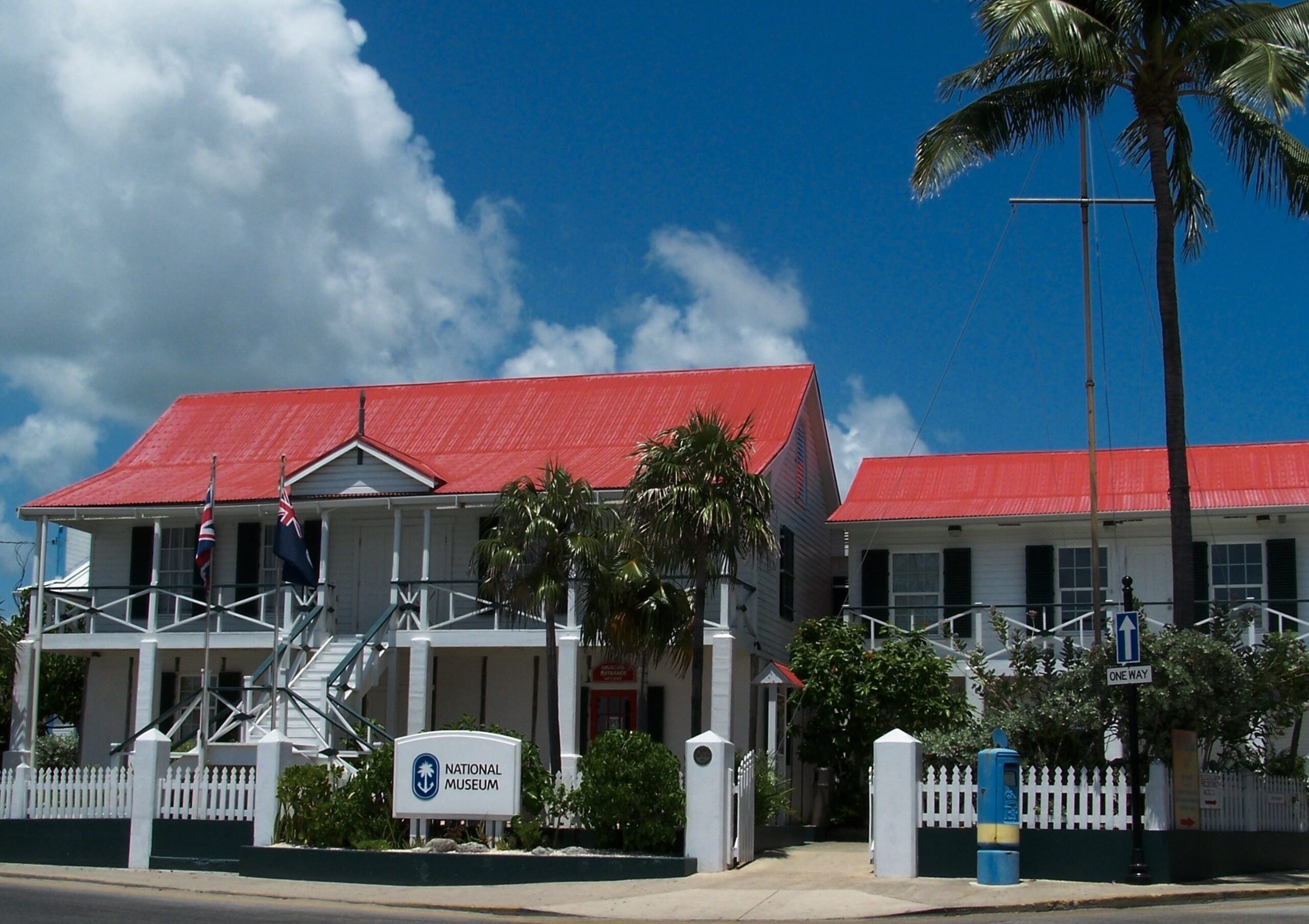
Cayman Islands National Museum
Cayman Islands National Museum was built in one of the most unorthodox methods. The museum educates tourists about the history of its airways, countless relics dating back over 9000 years, and the rich history that the islands possess within themselves. A local who had spent years collecting Cayman Islands-related artifacts. Later, the government took all of his belongings and decided to establish a National Museum.
Stingray City
One of the nicest spots to visit in the Cayman Islands is Stingray City. Stingray City includes two sand bars: one where you can feed the stingrays and another where you can dive into a stingray-infested sea. Stingrays are safe as long as they are not disturbed. Tourists are initially transported to a shallow bar where they may pet and feed stingrays a regulated amount of squid. Following that, travelers are taken on a scuba diving excursion where they may plunge into the sea and get up close and personal with stingrays that often live on the water’s surface. It is an exciting event that you should try at least once in your life.


The Cayman Turtle Center
The Cayman Turtle Center is a conservation institution and tourist attraction in Grand Cayman’s West Bay district, Cayman Islands. In 1968, a group of American and British businessmen established “Mariculture Ltd,” afterward renamed “Cayman Turtle Farm,” to nurture the endangered green sea turtle for economic purposes. By breeding turtles in a farming company, turtle meat might be provided for local consumption without reducing the species’ natural population. Although the Cayman Turtle Center remains a turtle farm for sale, it has developed into an important research initiative and conservation center. It is currently the Cayman Islands’ most popular land-based tourism site, with over 500 thousand visitors each year.
5-day Itinerary in The Cayman Islands
Day 1
Arrive in Grand Cayman
For many, Seven Mile Beach is the most familiar site in the Cayman Islands—the postcard-perfect crescent of white sand is routinely ranked among the world’s greatest beaches, and it is surrounded with several of Grand Cayman’s top resorts.
After you’ve settled into your room, head to the National Gallery of the Cayman Islands, where you can explore the sculpture gardens and works by local artists in the permanent collection, as well as amazing international exhibits you might not expect to see in the Caribbean.
In the evening, dine at one of Camana Bay’s restaurants, a waterfront “town” that is one of the Cayman Islands’ best shopping and dining attractions.
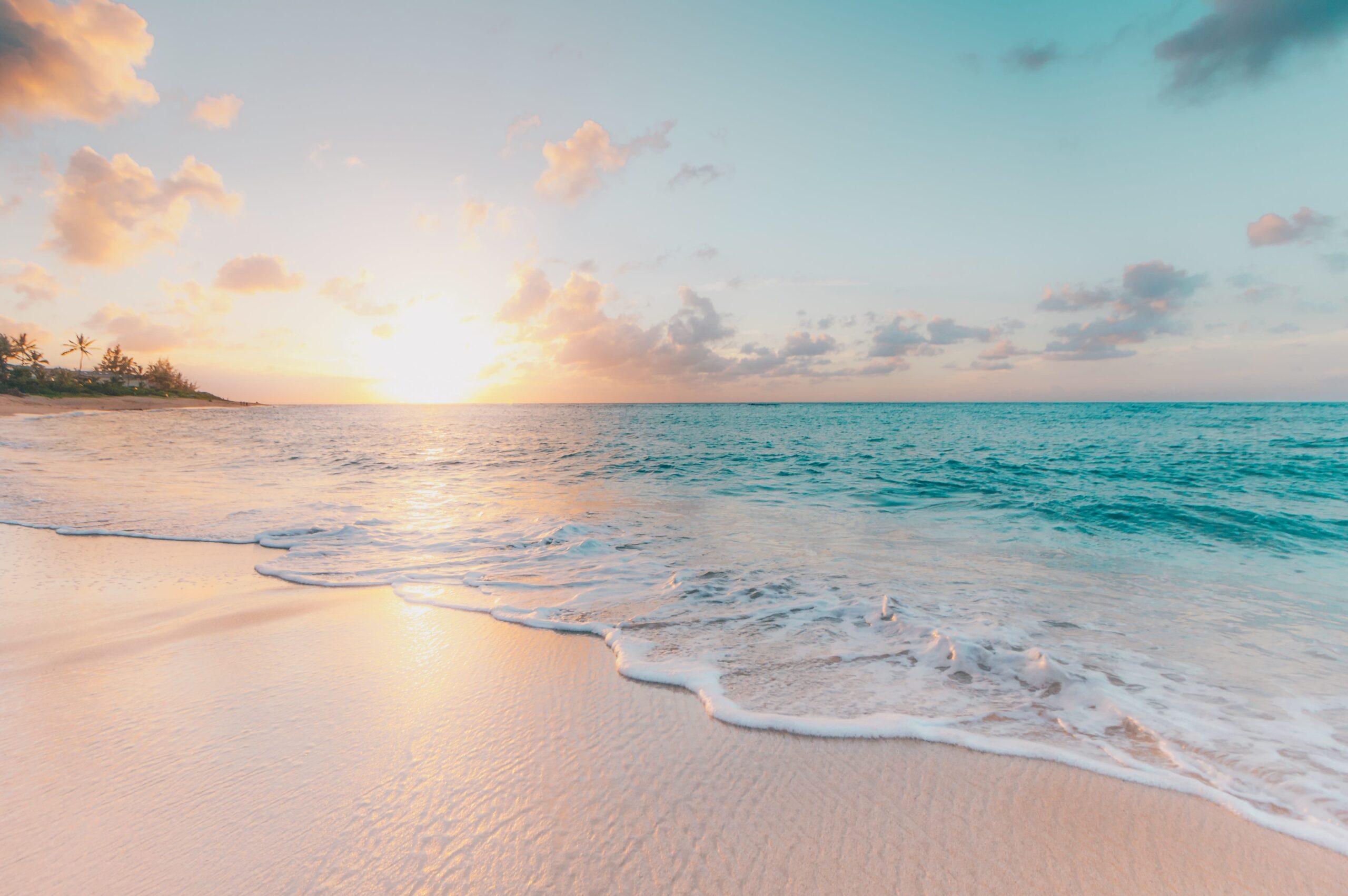
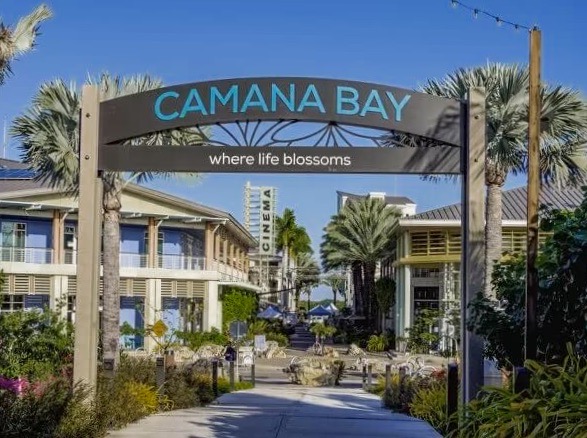
- Backpacker:
- Budget:
- Mid-range:
- Luxury: Marriott Grand Cayman Beach Resort,
This section will be added shortly.
Day 2
Explore Georgetown
Spend the morning touring the sights of George Town, the capital of Cayman Islands. A self-guided walking tour can begin at the Cayman Islands National Museum, which provides an overview of the island’s history. Continue to the Craft Market to buy locally created presents to take home, and then visit some of the town’s historic and modern attractions, including the new Legislative Assembly, the Library constructed in 1939, and the Town Hall from the 1920s.
Stop for lunch at the neighboring Paradise Grill, where you can swim among the fish before diving into their classic island-style fish sandwich. Mentioning diving Kittiwake Shipwreck & Artificial Reef offers a great experience in the underworld.
Spend the day at your hotel’s pool or beach, either relaxing with a book or participating in some of the water activities available. In the evening, you can visit more of the Seven Mile Beach pubs and restaurants.


- Backpacker:
- Budget:
- Mid-range:
- Luxury:


Day 3
Off to Little Cayman
This morning, you’ll travel to the second island on your Cayman Islands trip, Little Cayman, the smallest in the archipelago and home to only around 200 people. If you prefer to see the sights on dry land, you may easily move around Little Cayman by bike or scooter.
Point of Sand, on the island’s eastern end, is one of its most picturesque beaches, with shallow seas that are home to loggerhead turtles and views of adjacent Cayman Brac. It’s a terrific site to look for seashells, snorkel, or simply relax on this beautiful, hardly populated island. In the evening, consider eating at the Southern Cross Club, the island’s oldest resort, founded in 1958 as a fishing club.
- Backpacker:
- Budget:
- Mid-range:
- Luxury: The Southern Cross Club
Day 4
Owen Island Day Trip
If you aren’t going diving today, you may have a Robinson Crusoe adventure on Owen Island. This spit of land, located just off the coast of the Southern Cross Club, is deserted and has no permanent constructions. Bring a picnic lunch from your accommodation and kayak the short distance to spend the day exploring this beautiful small islet.
Return to the “mainland” of Little Cayman and make your way to the Hungry Iguana restaurant, with its breezy porch overlooking the sea, when you’re ready to chat to humans again. The environment is relaxed, as it is across the island, and you may meet residents and other guests while sipping a nice cold drink.



Day 5
Goodbye Paradise
Your airport shuttle is almost always included in your hotel cost, however, it won’t hurt to ask. This will make it simpler when you arrive and when you leave back home. However, now that you’ve seen all of the Cayman Islands, you’ll know which ones you want to spend more time investigating on your future visit.
The Most Popular Food in The Cayman Islands
The Cayman Islands’ cuisine is comparable to that of the rest of the Caribbean with the food distinctly Jamaican in flavor, and seafood is widely available. International restaurants are also easily accessible, with some of the greatest meals just a short walk away. Strombus Gigas, a kind of conch, is said to have originated in the Cayman Islands, where it has been a staple diet for millennia. Conch marinade is used in salads, creamy chowders, and stews. Cayman’s culinary scene outperforms the rest of the Caribbean, with cuisine as bright and colorful as the island itself. Cayman’s food is incentive enough to visit, combining spices, fish, and fresh vegetables to produce distinct and exquisite meals. It is thought to be the birthplace of the conch.

Conch Stew
Conch, a kind of sea snail, is delicious in stews, soups, fritters, and salads and is a famous ingredient in all of the Caribbean islands. Cayman conch tastes just like Bahamas conch, which is the country’s national dish. During conch season, most restaurants serve conch (November-April). Take a journey to the North Side and dine by the water at ‘Over the Edge,’ which serves some of the tastiest conch stew in town.
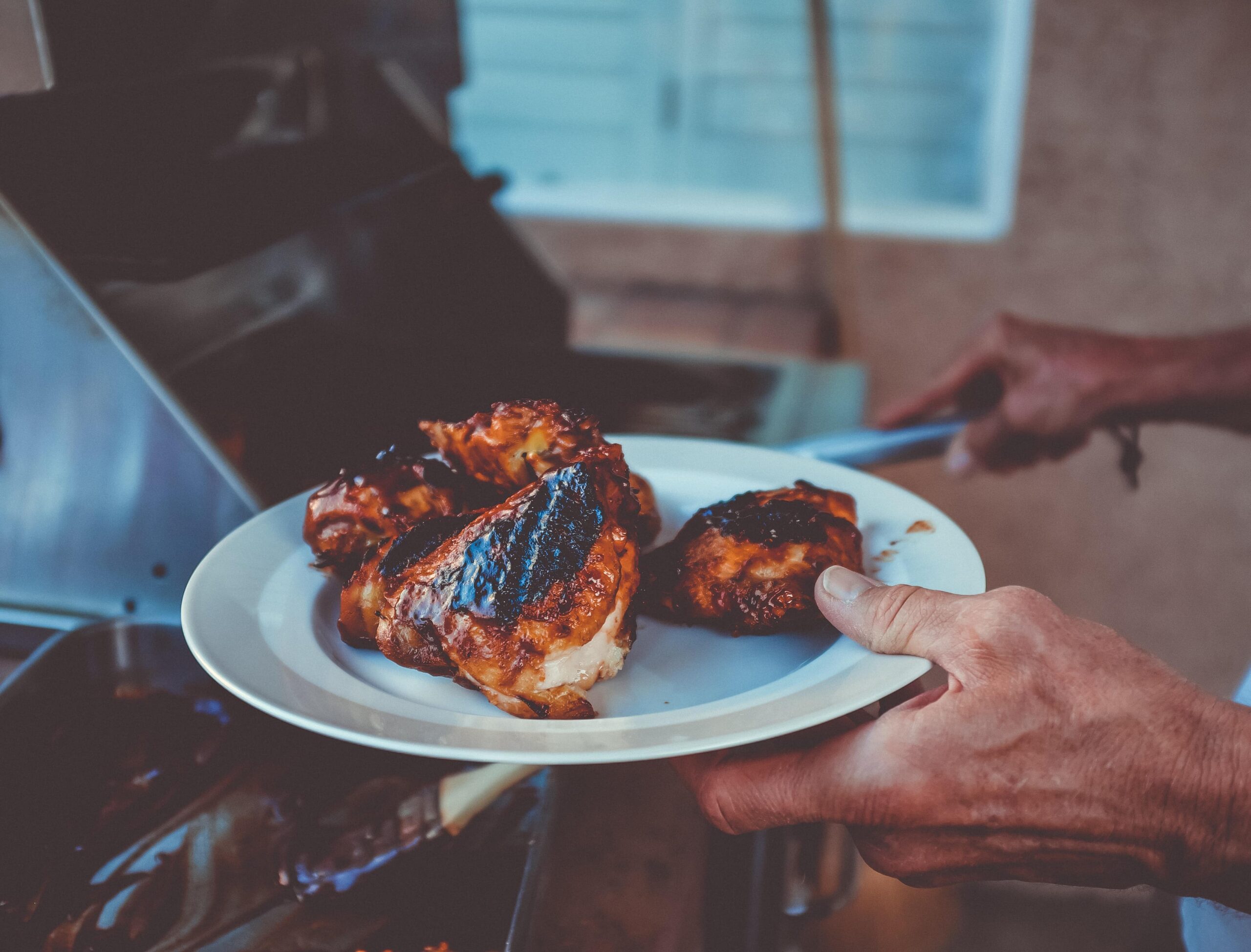
Jerk Chicken
The most well-known Caribbean food is this spicy Jamaican dish made with scotch bonnet peppers and spices. If you’re looking for some juicy beef with a kick, the island’s smoking, delicious-smelling jerk stalls will not disappoint.

Cayman-Style Lobster
The Caribbean lobster is a delicacy and is the greatest of its kind. There are lush, delectable lobster meals in risottos, pastas, and even patties all across the island, but one thing you must try is Cayman-style lobster tails from ‘Deckers’ on Seven Mile Beach. When prepared with hot sauce and scotch bonnet peppers, this spicy, tender dinner is nothing short of fantastic.
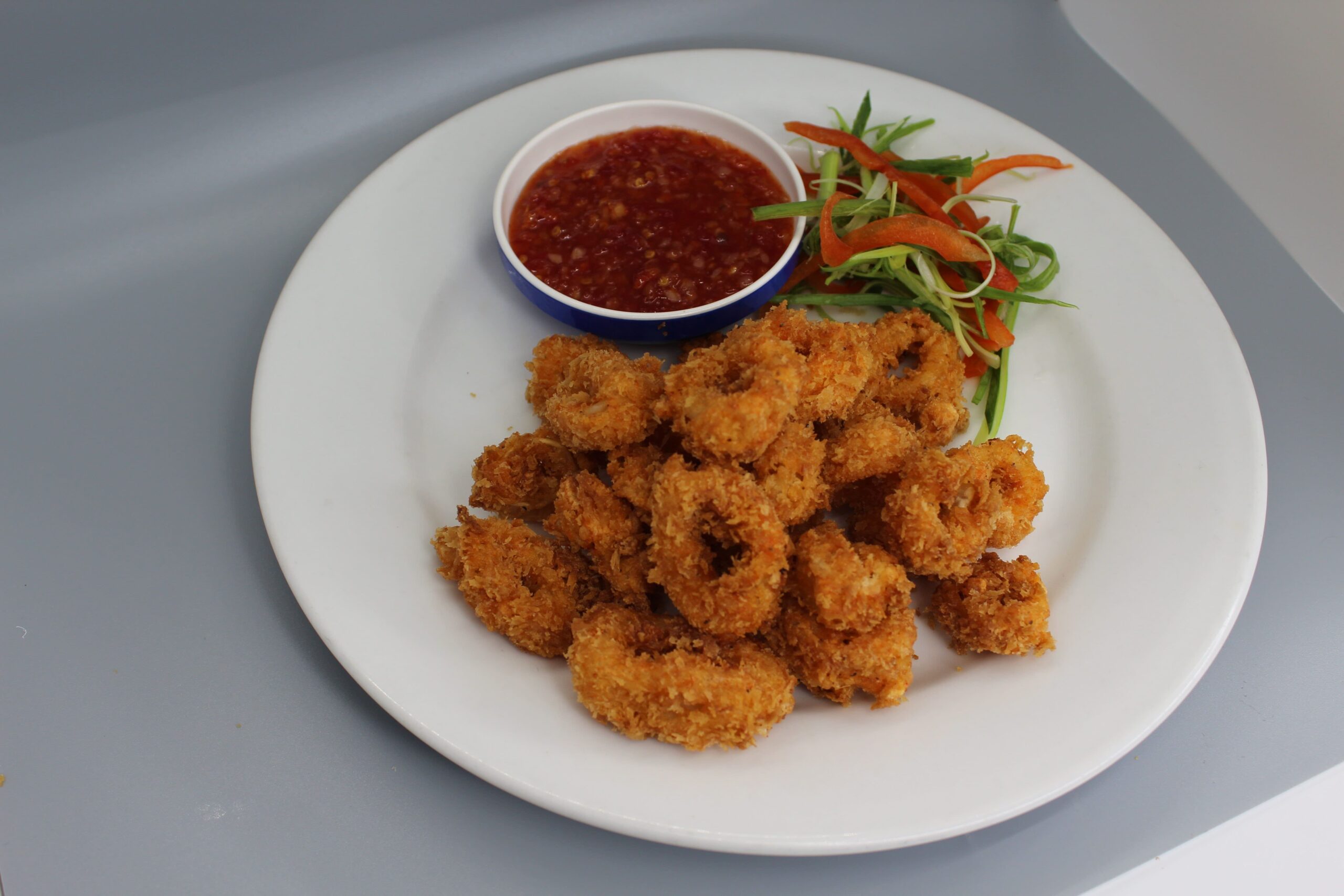
Coconut Shrimp
Cayman is famous for its delicious seafood dishes, like as coconut shrimp, a local favorite. Because it is deep-fried and topped with coconut shavings, this is not a dish to be missed.
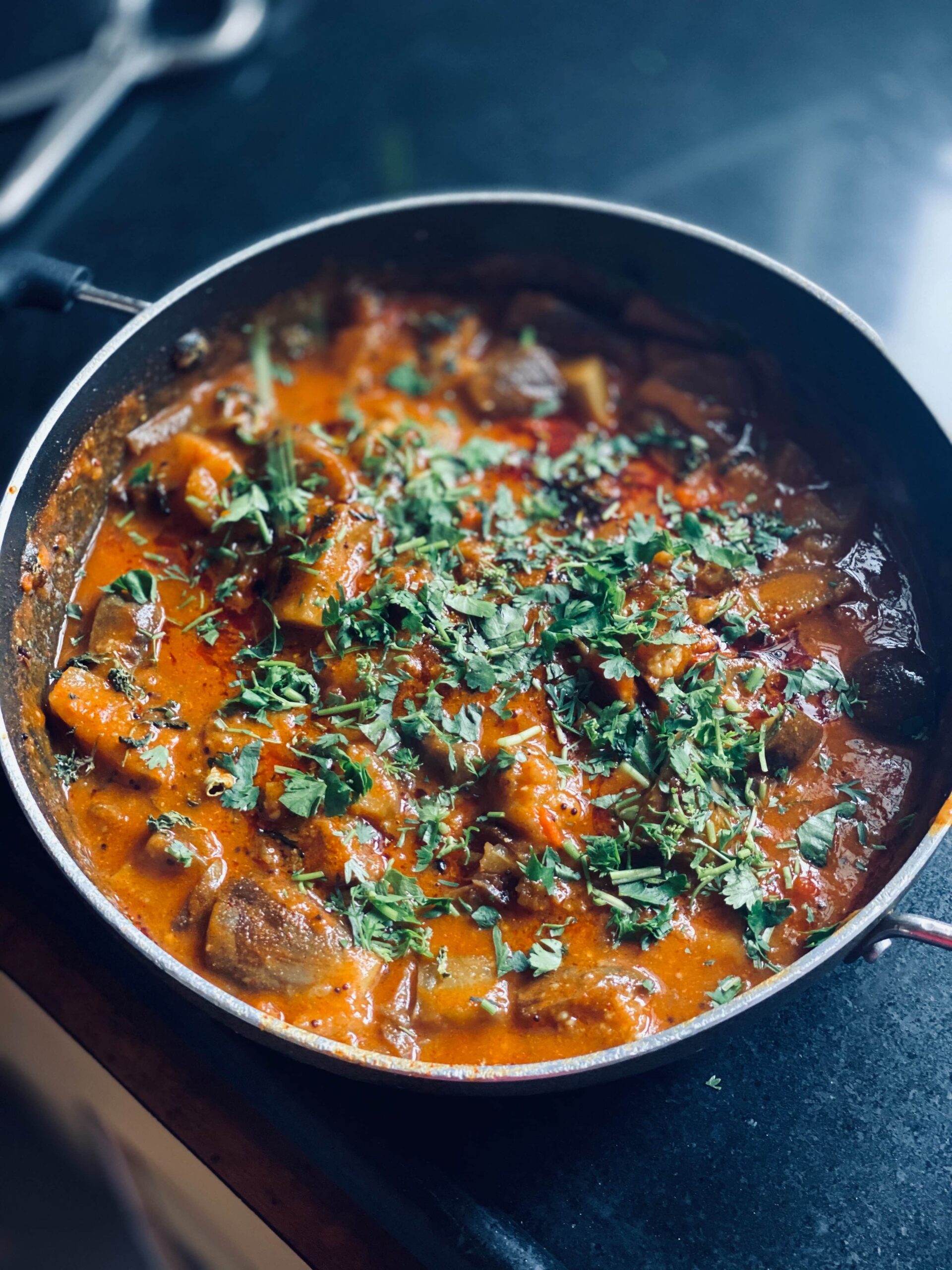
Turtle Stew
This meal is frequently regarded as the Cayman Islands’ national cuisine. The turtles are endangered, yet you may eat the legally made stew provided by the Cayman Turtle Farm. The stew is made with a variety of spices, and the flavor of the turtle has been compared to either steak or chicken.
What's the Travel Budget for The Cayman Islands?
Flights
- Flights start at roughly $300 from nearby countries. Tickets however on average cost around $800 and can cost way more depending on which class and from which country you depart from.
Accommodation
- Nomad Backpacking style travelers can expect to spend around $560 for a week
- Budget travelers can expect to spend around $700 for a week
- Mid-range travelers can expect to spend around $1600 for a week
- Luxury travelers can expect to spend around $3,250 for a week
Food Budget (Three meals and drinks)
- Nomad Backpacking style travelers can expect to spend around $22 per person per day
- Budget travelers can expect to pay around $30 per person per day
- Mid-range travelers on average would cost $35 to $50 per person per day
- Luxury travelers can expect to pay around $60 to $130 per person per day
Overall Budget Styles (Not including Flights, Tours, Transportation, or Car Rental)
- Nomad Backpacking style travelers can expect to spend roughly $750 for a week
- Budget travelers can expect to spend close to $960 for one person for a week
- Mid-range travelers can expect to spend approximately $2,000 for one person for a week
- Luxury travelers can expect to spend around $4,250 for one person for a week
Flights
- Flights start at roughly $300 from nearby countries. Tickets however on average cost around $800 and can cost way more depending on which class and from which country you depart from.
Accommodation
- Nomad Backpacking style travelers can expect to spend around $560 for a week
- Budget travelers can expect to spend around $700 for a week
- Mid-range travelers can expect to spend around $1600 for a week
- Luxury travelers can expect to spend around $3,250 for a week
Food Budget (Three meals and drinks)
- Nomad Backpacking style travelers can expect to spend around $22 per person per day
- Budget travelers can expect to pay around $30 per person per day
- Mid-range travelers on average would cost $35 to $50 per person per day
- Luxury travelers can expect to pay around $60 to $130 per person per day
Overall Budget Styles (Not including Flights, Tours, Transportation, or Car Rental)
- Nomad Backpacking style travelers can expect to spend roughly $750 for a week
- Budget travelers can expect to spend close to $960 for one person for a week
- Mid-range travelers can expect to spend approximately $2,000 for one person for a week
- Luxury travelers can expect to spend around $4,250 for one person for a week
Flights
- Flights start at roughly $300 from nearby countries. Tickets however on average cost around $800 and can cost way more depending on which class and from which country you depart from.
Accommodation
- Nomad Backpacking style travelers can expect to spend around $560 for a week
- Budget travelers can expect to spend around $700 for a week
- Mid-range travelers can expect to spend around $1600 for a week
- Luxury travelers can expect to spend around $3,250 for a week
Food Budget (Three meals and drinks)
- Nomad Backpacking style travelers can expect to spend around $22 per person per day
- Budget travelers can expect to pay around $30 per person per day
- Mid-range travelers on average would cost $35 to $50 per person per day
- Luxury travelers can expect to pay around $60 to $130 per person per day
Overall Budget Styles (Not including Flights, Tours, Transportation, or Car Rental)
- Nomad Backpacking style travelers can expect to spend roughly $750 for a week
- Budget travelers can expect to spend close to $960 for one person for a week
- Mid-range travelers can expect to spend approximately $2,000 for one person for a week
- Luxury travelers can expect to spend around $4,250 for one person for a week
Flights
- Flights start at roughly $300 from nearby countries. Tickets however on average cost around $800 and can cost way more depending on which class and from which country you depart from.
Accommodation
- Nomad Backpacking style travelers can expect to spend around $560 for a week
- Budget travelers can expect to spend around $700 for a week
- Mid-range travelers can expect to spend around $1600 for a week
- Luxury travelers can expect to spend around $3,250 for a week
Food Budget (Three meals and drinks)
- Nomad Backpacking style travelers can expect to spend around $22 per person per day
- Budget travelers can expect to pay around $30 per person per day
- Mid-range travelers on average would cost $35 to $50 per person per day
- Luxury travelers can expect to pay around $60 to $130 per person per day
Overall Budget Styles (Not including Flights, Tours, Transportation, or Car Rental)
- Nomad Backpacking style travelers can expect to spend roughly $750 for a week
- Budget travelers can expect to spend close to $960 for one person for a week
- Mid-range travelers can expect to spend approximately $2,000 for one person for a week
- Luxury travelers can expect to spend around $4,250 for one person for a week
If you want to know what to pack, read this list below:
- This is a tropical island that can get extremely hot or too rainy and windy sometimes, dress accordingly
- Raincoat or Light Waterproof Jacket
- Hiking Boots or Sturdy Sneakers (Shoes You Don’t Mind Getting Wet)
- Sunscreen
- Insect Protection – Repellent and Clothing
- Sunglasses and Sun Hat
- Water Shoes
- Beach Towels/Sarong
- Dry Bag
- Money Belt or Cross Bag
- Portable Medical Kit
- Flashlight or Headlamp
- Copies of your passport.
- Get all the needed vaccinations before traveling
- A power bank is a must in any travel.
- Always have some cash with you just in case there are no ATMs and if you are dealing with a business that solely accepts cash
- Get yourself an adapter for your gadgets
- 1 toothbrush
- 1 tube of toothpaste
- 1 razor
- 1 package of dental floss
- 1 small bottle of shampoo
- 1 small bottle of shower gel
- 1 towel
- Deodorant
- Band-Aids
- Hydrocortisone cream
- Antibacterial cream
- Earplugs
- Tylenol
- Hand sanitizer (germs = sick = bad holiday)
- A key or combination lock
- Zip-lock bags
- Plastic bags (great for laundry)
- Universal charger/adaptor
- LifeStraw (A water bottle with a purifier)
- 1 dry shampoo spray & talc powder
- 1 hairbrush
- Makeup you use
- Hairbands & hair clips
- Feminine hygiene products
Clothing For Boys
- 1 pair of jeans or khaki pants
- 1 pair of shorts
- 1 bathing suit
- 5 T-shirts
- 1 long-sleeved T-shirt
- 1 pair of flip-flops
- 1 pair of sneakers
- 6 pairs of socks
- 5 pairs of boxer shorts
Clothing For Girls
- 1 swimsuit
- 1 sarong
- 1 pair of stretchy jeans
- 1 pair of leggings
- 2-3 long-sleeve tops
- 2-3 T-shirts
- 3-4 spaghetti tops
- 1 light cardigan
Want to plan your own trip, here are some of the best resources that can help you
- Skyscanner – They search small websites and budget airlines that larger search sites tend to miss. They are hands down the number one place to start.
- Momondo – This is another favorite flight search engine because they search such a wide variety of sites and airlines. Always check here too.
- Booking.com – The best all-around booking site that constantly provides the most affordable and lowest rates. They have the widest selection of budget accommodation.
- Couchsurfing – This website allows you to stay on people’s couches or spare rooms for free. It’s a great way to save money while meeting locals who can tell you the ins and outs of their city. The site also lists events you can attend to meet people (even if you’re not staying with someone).
- Intrepid Travel – If you want to do group tours, go with Intrepid. They offer good small group tours that use local operators and leave a small environmental footprint.
- Grassroots Volunteering – For volunteering, Grassroots Volunteering compiles a list of good local volunteer organizations that keep the money within the community.
- Get Your Guide – Get Your Guide is a huge online marketplace for tours and excursions. They have tons of tour options available in cities all around the world, including everything from cooking classes, walking tours, street art lessons, and more! It has the world’s largest collection of things to do with more than 30,000 activities in 7500 destinations.
- SafetyWing – Safety Wing offers convenient and affordable plans tailored to digital nomads and long-term travelers. They have cheap monthly plans, great customer service, and an easy-to-use claims process that makes it perfect for those on the road.
- Trip Advisor: Check the reviews and then book your accommodation. TripAdvisor is where you go when you want to compare prices with multiple accommodation providers.
- VRBO: is the main search engine to use when you are looking for a home or apartment rental. It can sometimes be cheaper than hotels and it is the best way to stay in areas that offer a more local feel.
- Hostelworld: With one of the largest databases of hostels in the world, Hostelworld is the go-to site when you are looking for budget accommodation.
- Rome 2 Rio: If you want to see how to get somewhere by plane, train, bus, ferry, or car Rome2Rio lays it all out for you as well as related costs.
- World Nomads Insurance: When traveling you should always have travel insurance. We have found the best bang for your buck is by far World Nomads.
Final Thoughts on The Cayman Islands
With its historic colonial structures, charming people, magnificent and distinct landmarks, real hospitality, exciting festivals and dances, and a breathtaking environment, the Cayman Islands has a refined and rich heritage that can be observed across the country. A fantastic option for anybody searching for an island feel in a safer, more developed setting, with stunning scenery and clean beaches. The Cayman Islands are breathtakingly beautiful, with incredible national treasures, marine life, and gorgeous scenery. Would you go to Cayman?
Have you been to the Cayman Islands? Please share your thoughts in the comments section below.